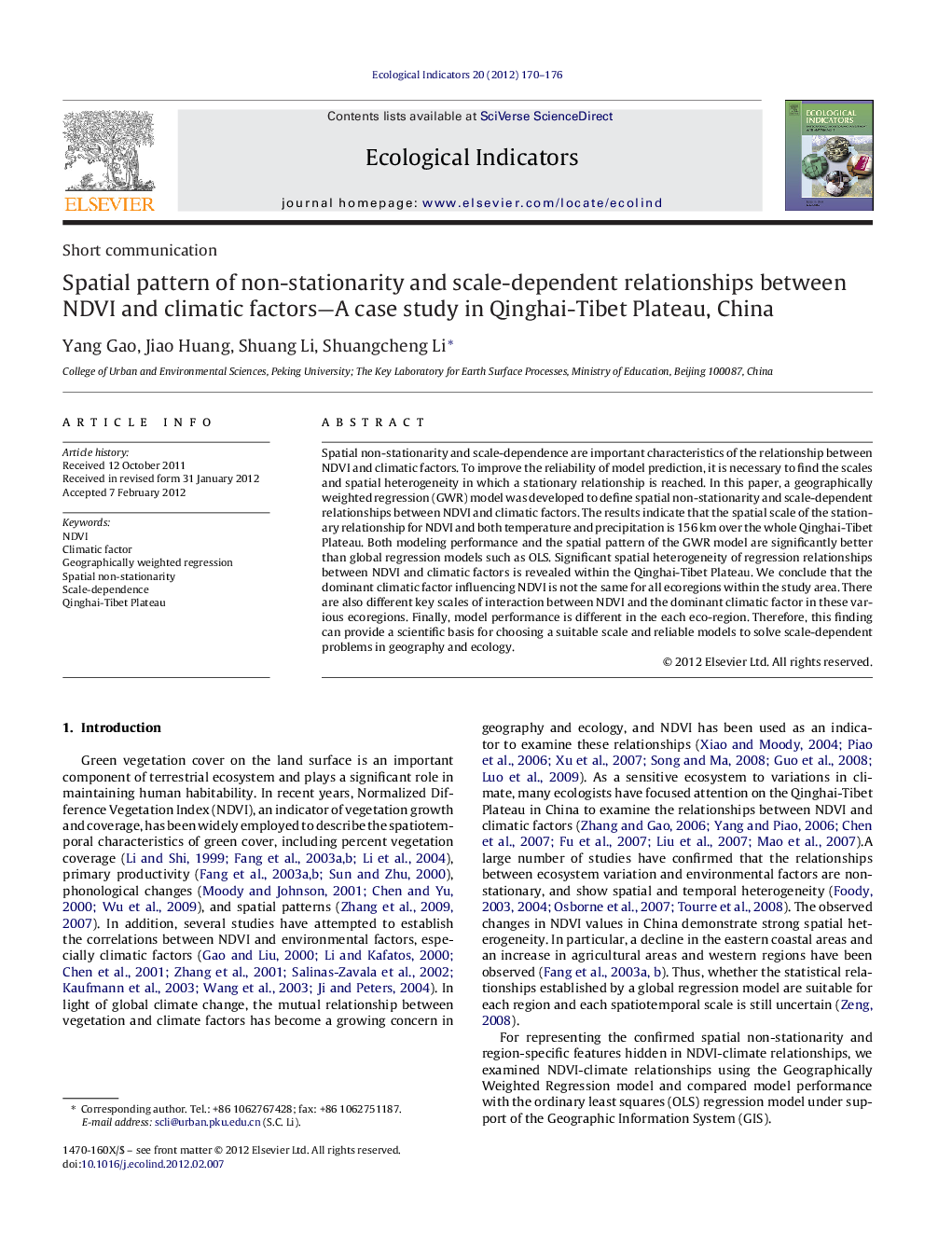| Article ID | Journal | Published Year | Pages | File Type |
|---|---|---|---|---|
| 6295471 | Ecological Indicators | 2012 | 7 Pages |
Abstract
Spatial non-stationarity and scale-dependence are important characteristics of the relationship between NDVI and climatic factors. To improve the reliability of model prediction, it is necessary to find the scales and spatial heterogeneity in which a stationary relationship is reached. In this paper, a geographically weighted regression (GWR) model was developed to define spatial non-stationarity and scale-dependent relationships between NDVI and climatic factors. The results indicate that the spatial scale of the stationary relationship for NDVI and both temperature and precipitation is 156Â km over the whole Qinghai-Tibet Plateau. Both modeling performance and the spatial pattern of the GWR model are significantly better than global regression models such as OLS. Significant spatial heterogeneity of regression relationships between NDVI and climatic factors is revealed within the Qinghai-Tibet Plateau. We conclude that the dominant climatic factor influencing NDVI is not the same for all ecoregions within the study area. There are also different key scales of interaction between NDVI and the dominant climatic factor in these various ecoregions. Finally, model performance is different in the each eco-region. Therefore, this finding can provide a scientific basis for choosing a suitable scale and reliable models to solve scale-dependent problems in geography and ecology.
Keywords
Related Topics
Life Sciences
Agricultural and Biological Sciences
Ecology, Evolution, Behavior and Systematics
Authors
Yang Gao, Jiao Huang, Shuang Li, Shuangcheng Li,
